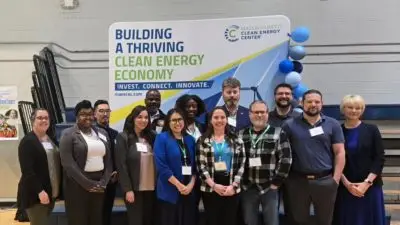By now you’ve probably seen the ENERGY STAR label online and around stores, and you might even have some ENERGY STAR products in your own home – but how much do you know about the program? Here are some highlights about the almost 30-year-old program that helps to promote the use of energy-efficient products in our homes, businesses, and lives.
What is ENERGY STAR?
The ENERGY STAR program helps homeowners, consumers, and businesses find energy-efficient products that help to reduce energy, save money, and protect the environment.
- It’s a voluntary labeling program that was launched in 1992 under President George H.W. Bush
- The program is managed by the U.S. Environmental Protection Agency (EPA)
- Since 1992, ENERGY STAR has helped to save 5 trillion kilowatt-hours of electricity, avoid more than $450 billion in energy costs, and prevent 4 billion metric tons of greenhouse gases from entering the atmosphere
- Every $1 that the EPA has spent on ENERGY STAR has resulted in $350 in energy savings for U.S. businesses and households
The ENERGY STAR label is recognized and trusted
89% of U.S. households recognize the ENERGY STAR label and one study showed that individuals are willing to pay $250-$350 more for a refrigerator that has an ENERGY STAR label.
The ENERGY STAR label is on more than 70 different types of products such as heating and cooling equipment, water heaters, pool pumps, electric vehicle chargers, televisions, computers, ceiling fans, lighting, kitchen appliances, and more!
In 2019, approximately 800,000 ENERGY STAR-certified products were bought daily, adding up to more than 7 billion products sold since the program started.
ENERGY STAR products help you save
According to the Natural Resources Defense Council (NRDC), “for every dollar Americans invest in energy efficiency through ENERGY STAR, they save, on average, $4.50 on their energy bills and prevent more than 35 pounds of climate-warming pollution.”
To put this into perspective, did you know that heating/cooling is the top energy expense in your home and that water heating comes in second place? Imagine what investing in energy-efficient appliances would do to your monthly energy costs.
It helps to protect the environment
By purchasing ENERGY STAR-certified products, you are participating in the fight against climate change. Lowering your energy use through energy-efficient appliances allows you to positively impact your community and our planet.
- In 2019, the ENERGY STAR program helped save 500 billion kilowatt-hours of electricity and avoid $39 billion in energy costs
- These savings resulted in emission reductions of nearly 390 million metric tons of greenhouse gases, equivalent to 5% of the total U.S. greenhouse gas emissions
ENERGY STAR partners with other organizations
ENERGY STAR partners with organizations such as Habitat for Humanity and the U.S. Department of Housing and Urban Development (HUD) to create efficient yet affordable housing.
ENERGY STAR has teamed up with 131 chapters of Habitat for Humanity to build more than 14,000 homes that are affordable and efficient, leading to big reductions in energy costs for families.
You can access big rebates for ENERGY STAR products
There are many rebates available on all types of ENERGY STAR appliances and equipment that make the investment affordable.
As a Mass Save® partner, we are able to give our customers special access to thousands of dollars in rebates for ENERGY STAR heating, cooling, and water heating equipment, 0% financing up to $25,000 for 7 years on upgrades, and other incentives that make reducing energy achievable.
To learn more, sign up for a no-cost Mass Save Home Energy Assessment here. It’s a great way to learn about the energy efficiency of your home and where the opportunities are for energy savings! Want to sign up over the phone? Call (781) 305-3319 and we’ll be happy to explain the rebates to you and show you what steps to take next.
How will you make your home more energy efficient?
Numbers provided by the U.S. Environmental Protection Agency, the U.S. Department of Energy, ENERGY STAR, and the National Resources Defense Council.








